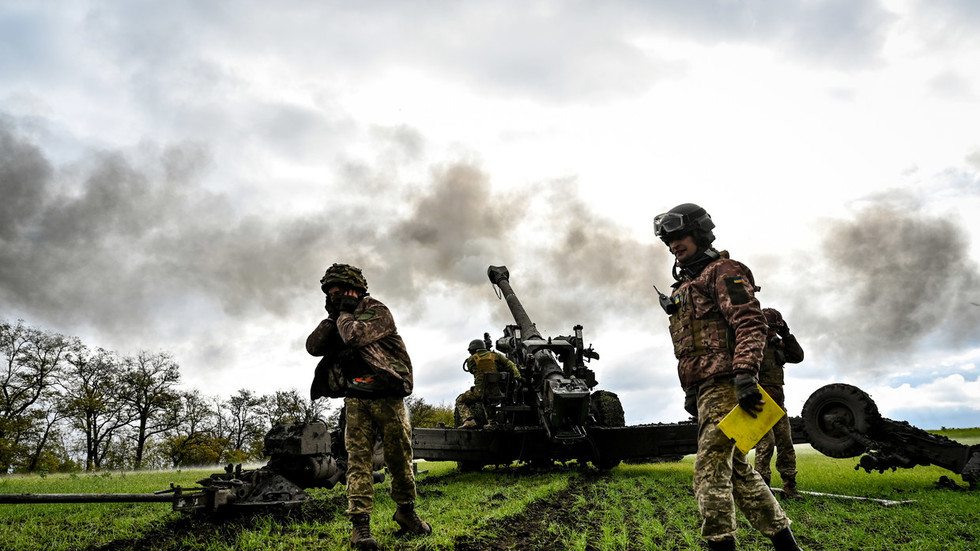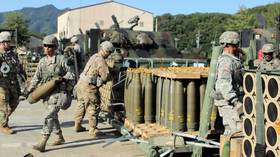
American cluster munitions would make Kiev’s artillery just “a little more lethal”, analysts and US officials have said

FILE PHOTO. © Global Look Press / Dmitry Smolienko
Cluster munitions that Washington has recently decided to provide to Kiev won’t have a significant impact on the situation on the frontlines in the short run, the New York Times reported on Friday, citing former US officials and military analysts.
The ammunition will not “immediately help” Ukraine’s offensive and would only allow Kiev’s troops to hold out as they face a drastic ammunition shortage, the interviewed experts believe.
“The scale of effect will be modest,” Jack Watling, a senior research fellow at the Royal United Services Institute (RUSI) in London, told the paper, adding that the real impact could be only seen when “Ukraine has significantly more ammo.” Colin Kahl, the US undersecretary of defense for policy, had said that the cluster bombs would just allow Ukraine to “sustain the artillery fight for the foreseeable future.”
According to the analysts, the Ukrainian military is likely to use cluster munitions to sustain the high rate of artillery fire as they revert from Western combined-arms tactics to Soviet-style heavy artillery shelling of the Russian positions.

Read more
“It looks like they’re back to an artillery duel,” Amael Kotlarski of the defense intelligence company Janes told the Times.
Western advisers hailed synchronized attacks by infantry, tanks and artillery as supposedly superior tactics to the artillery-centric approach both Russia and Ukraine were using before. The Ukrainian commanders, however, apparently became disillusioned with this type of warfare after their troops suffered heavy losses during unsuccessful attempts to penetrate Russian defenses over the past month, the newspaper said.
Such a development did not sit well with senior US officials, the Times reported, who “had privately expressed frustration” over the issue in recent weeks. The paper also described the artillery duel strategy as less efficient and more costly.

Read more
The Biden administration still hopes the nine Ukrainian brigades trained by the US and its allies will stick to the combined arms tactics and show that “the American way of warfare” is supposedly a superior one, according to the Times.
Kahl also noted that the Ukrainians were apparently uncomfortable with Western tactics. “It pushes them out of their comfort zone,” he said, adding that “it is requiring them to fight in different ways.” The Pentagon official admitted that the Ukrainian offensive was “slower than we had hoped” but maintained that “the Ukrainians have a lot of combat power left.”
Both American and Ukrainian military officials declined to elaborate on how exactly Kiev would use the US cluster munitions. Such ordnance has been banned by more than 110 nations under a UN convention, due to the serious danger they pose to civilians.

Read more
Cluster munitions scatter small bomblets that can fail to detonate and end up injuring or killing civilians for years, long after a conflict has ended. The munitions the US is supplying to Ukraine are 155-millimeter artillery shells fired by howitzers that release 72 small grenades once they reach their targets.
The decision to supply the controversial ordnance has been criticized by the UN as well as America’s own allies, including the UK, Canada and Spain. Austria, which is not a NATO member, expressed its concerns over the issue as well.
The Times claimed that both Russia and Ukraine had already used such munitions during the ongoing conflict, adding that Ukrainian President Vladimir Zelensky specifically pressed for this type of ammunition to supposedly breach the Russian defenses.
Moscow slammed the US move by saying that it would not affect the situation on the battlefield but would have “dire consequences” for civilians. Russian Defense Minister Sergey Shoigu has warned that Russia would “be compelled to use equivalent weapons” in response.




